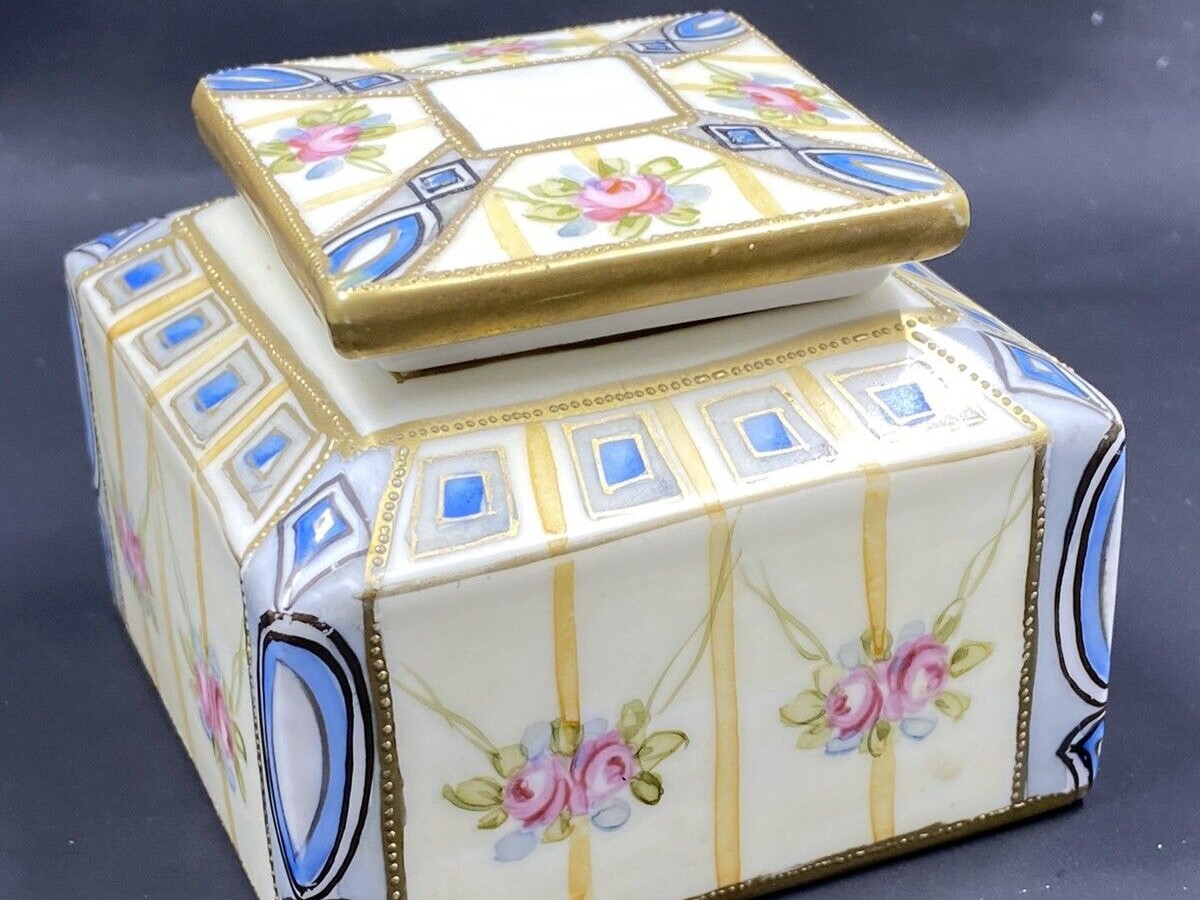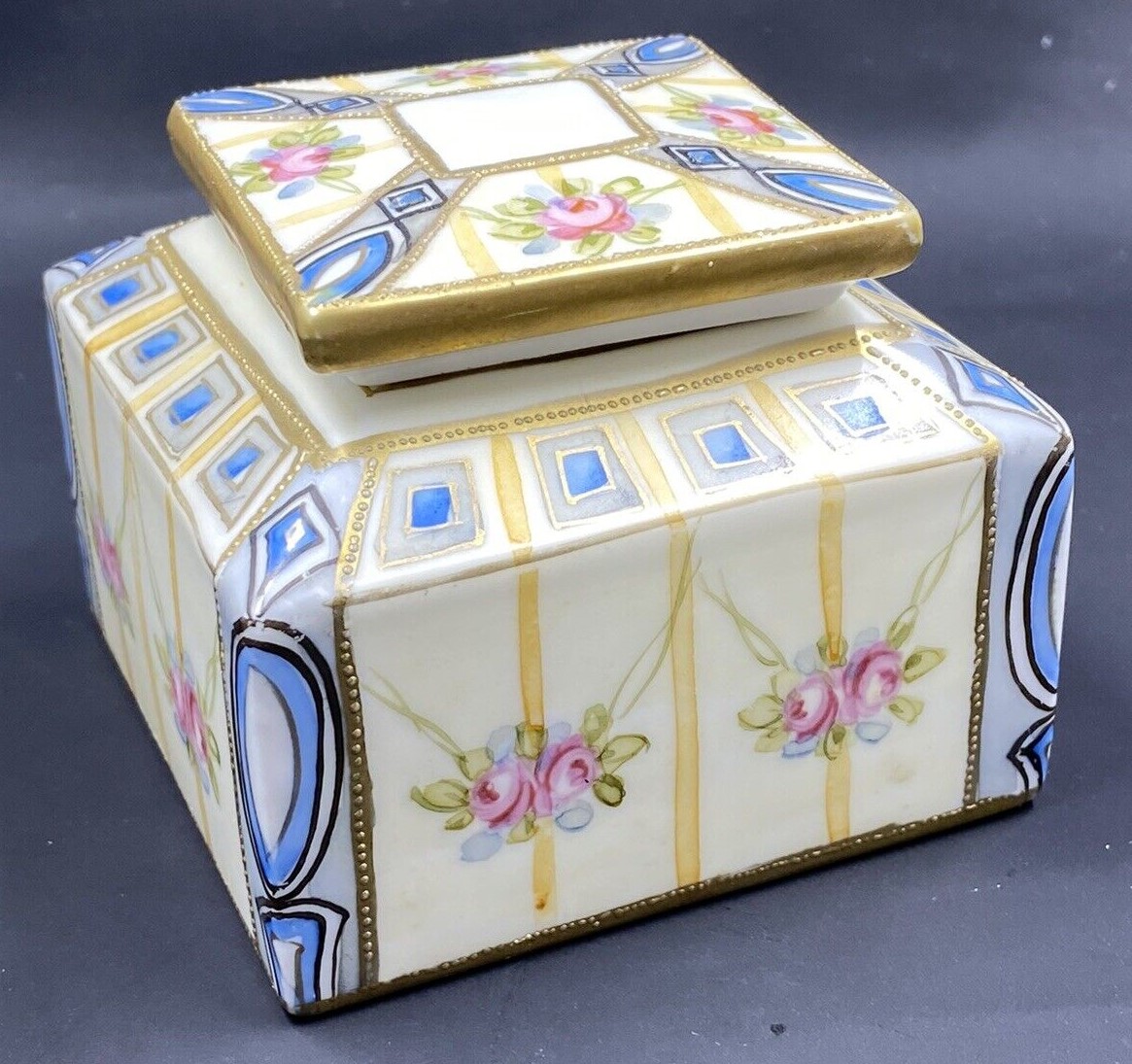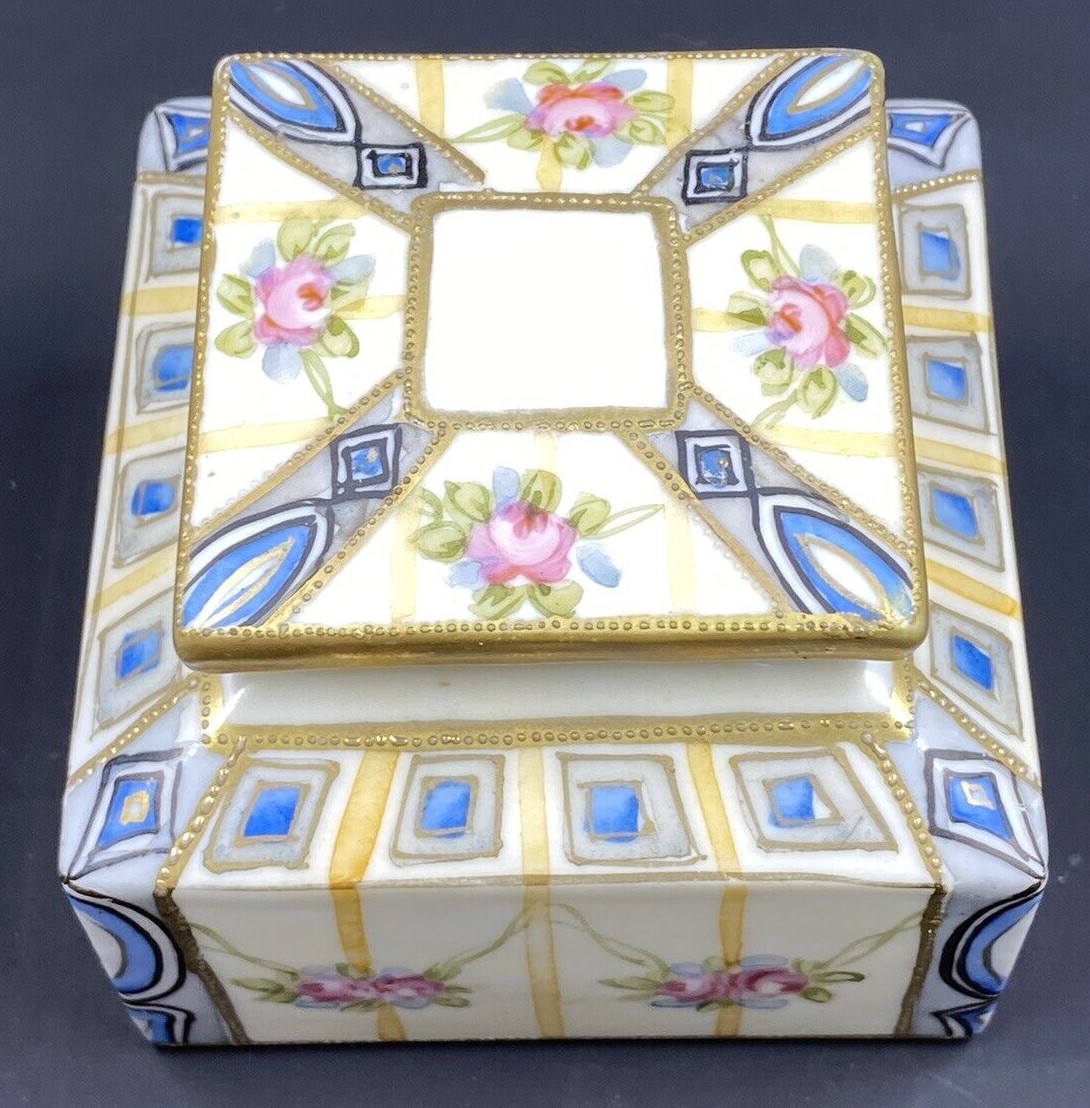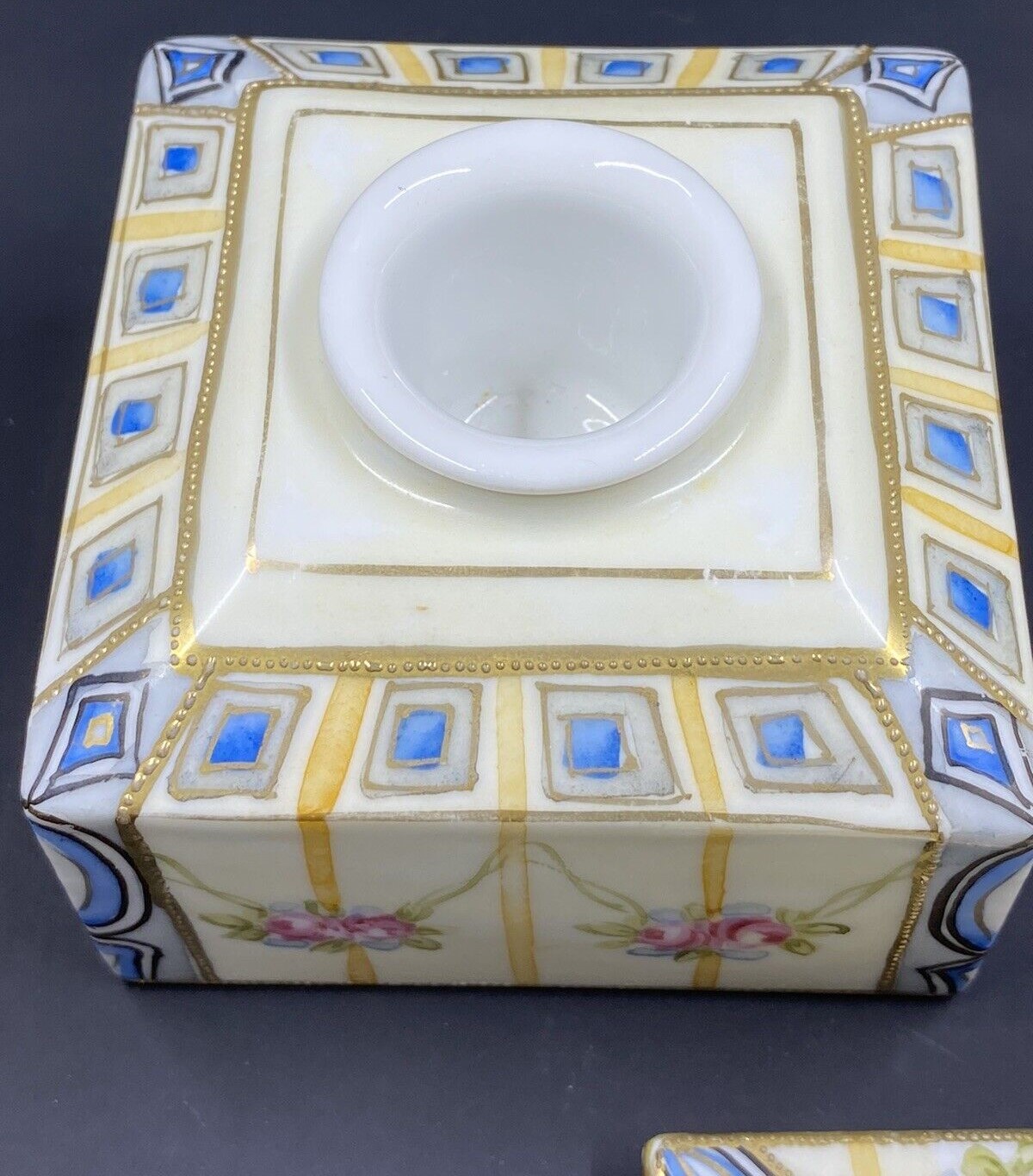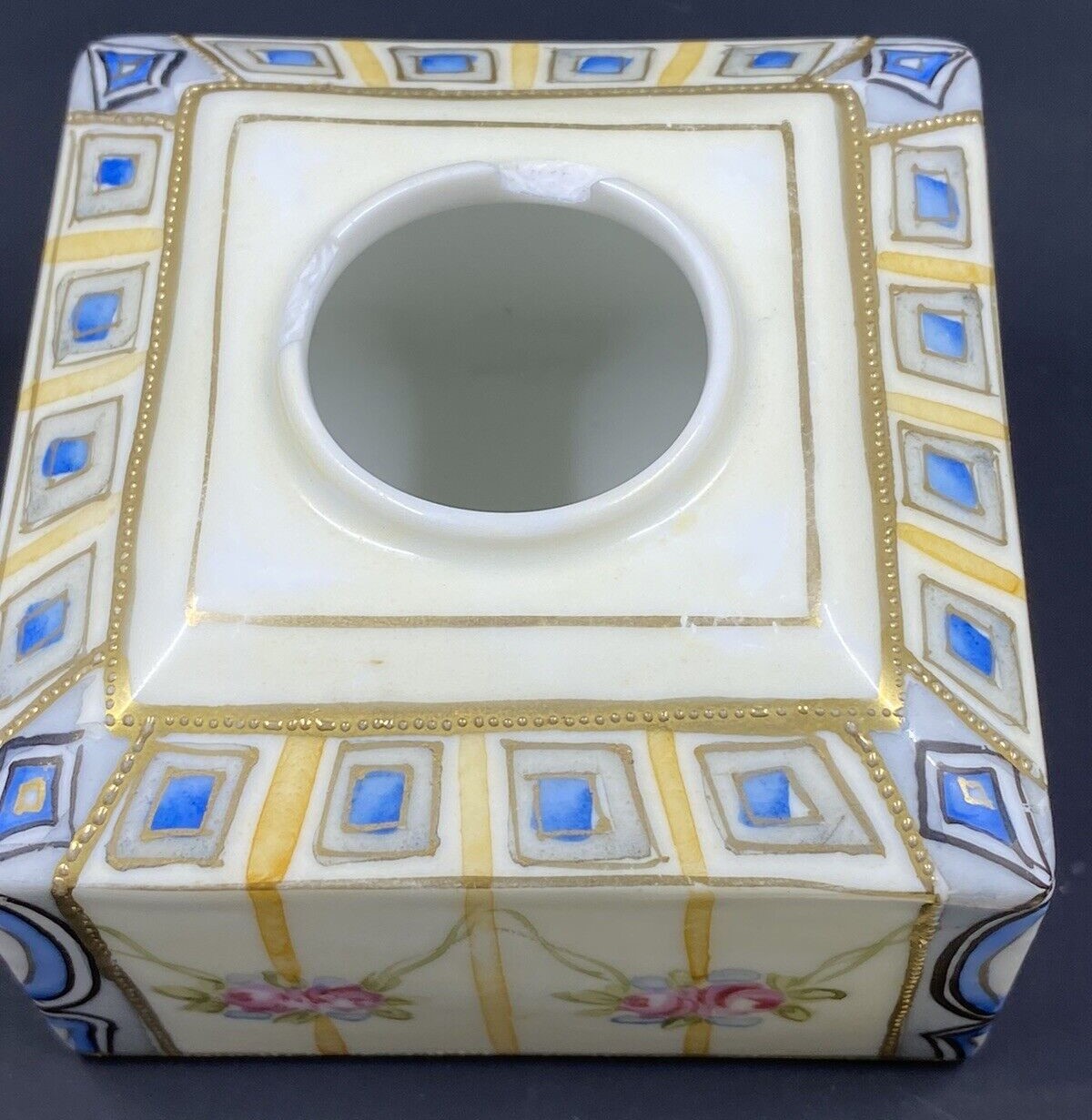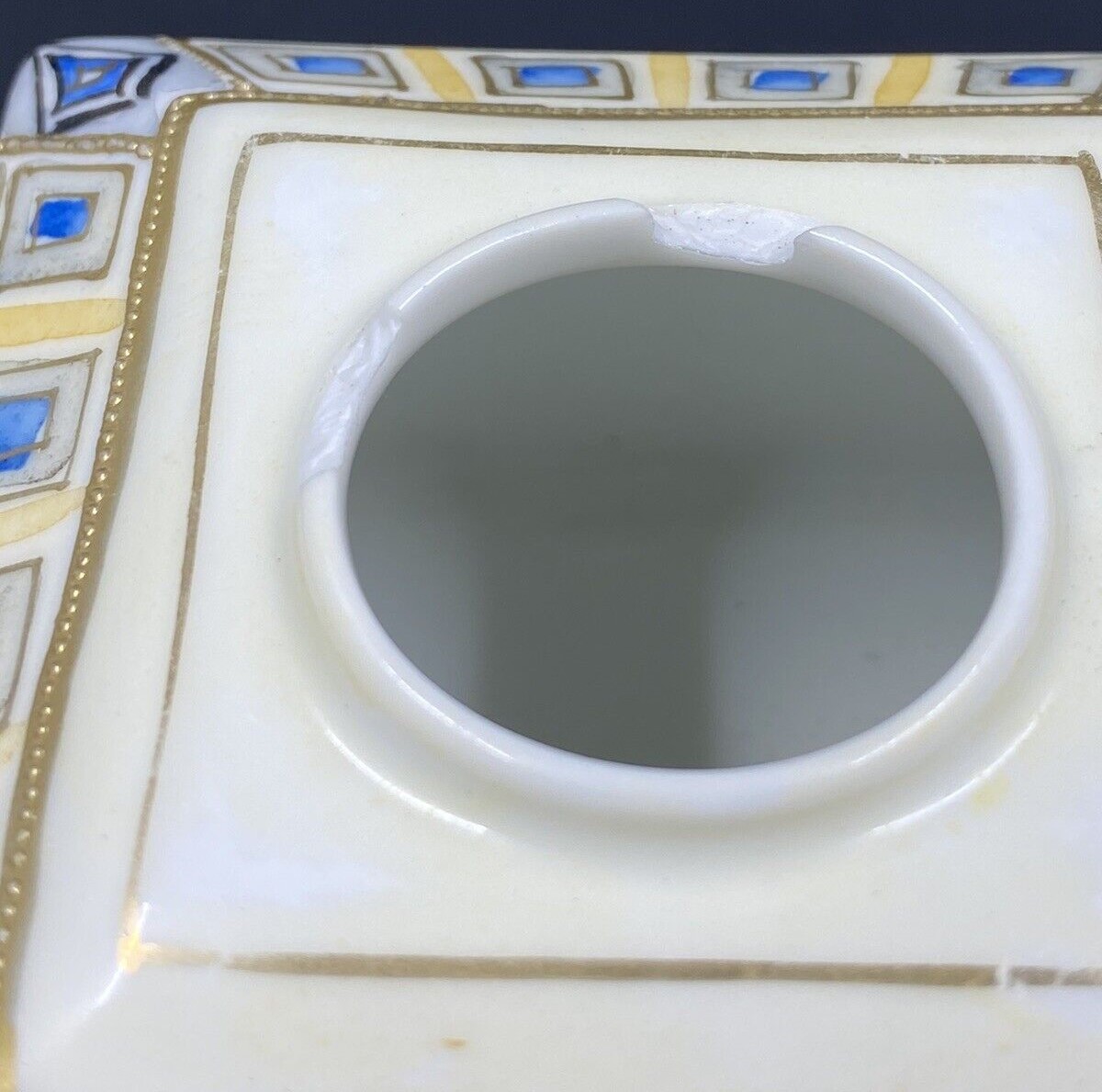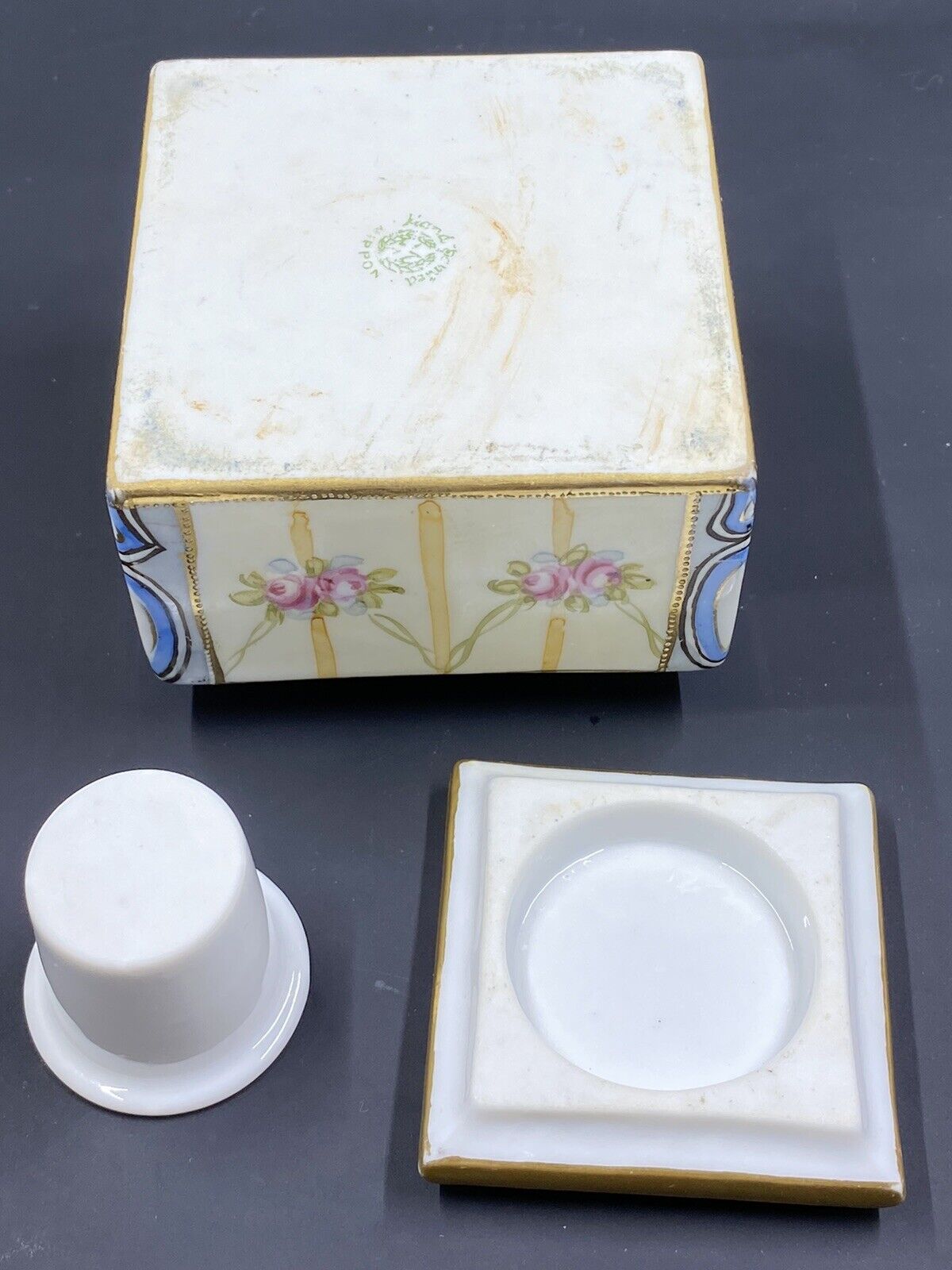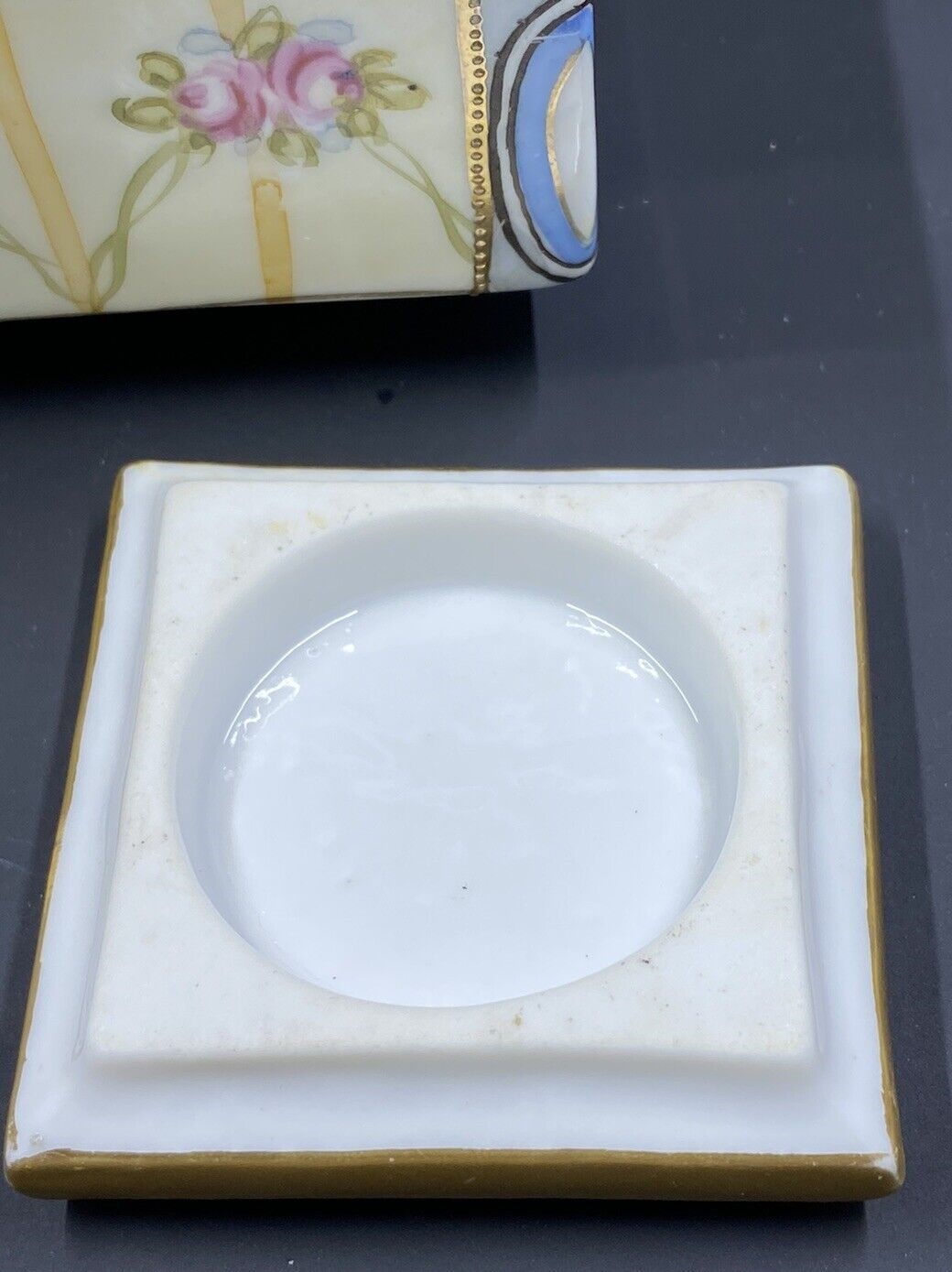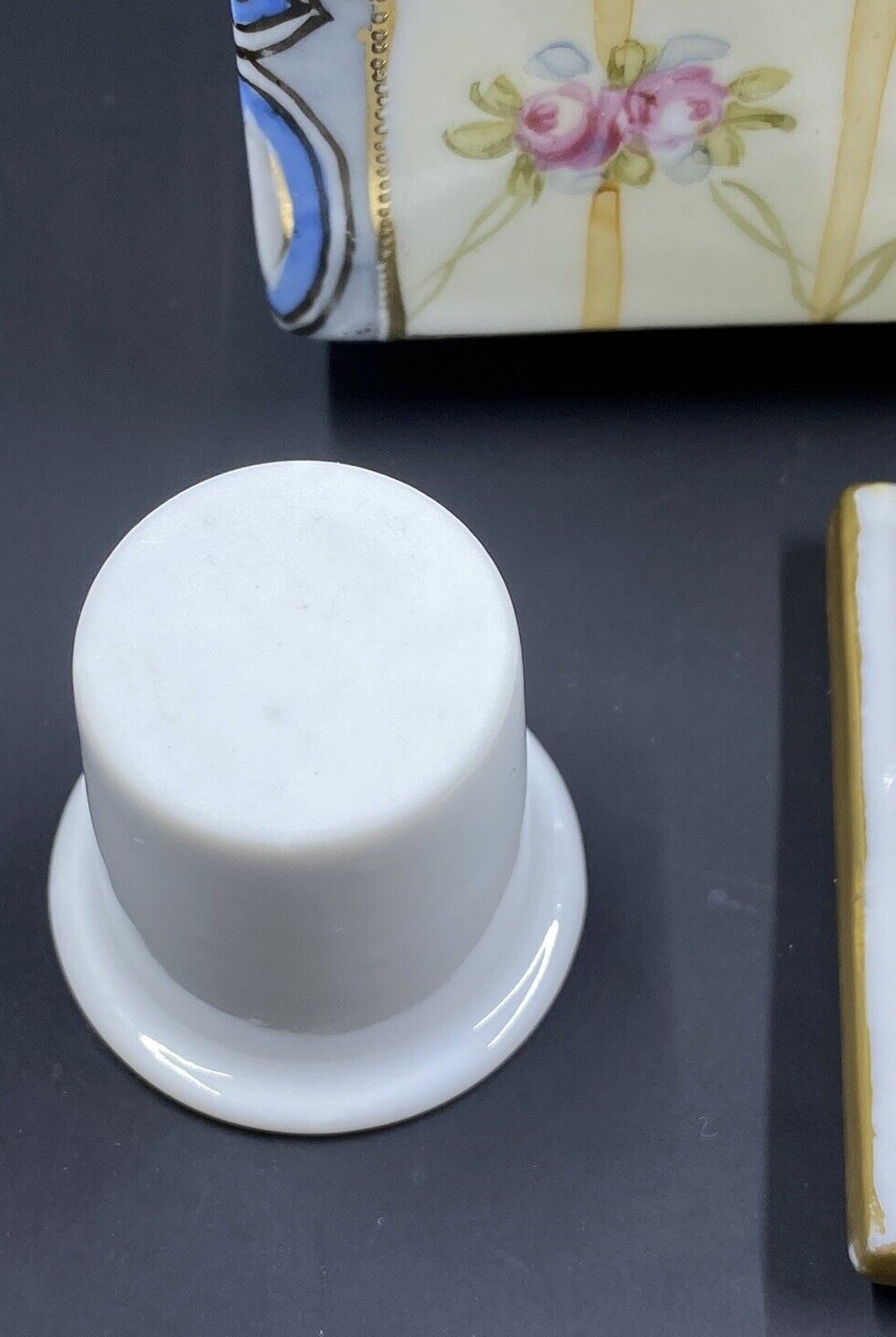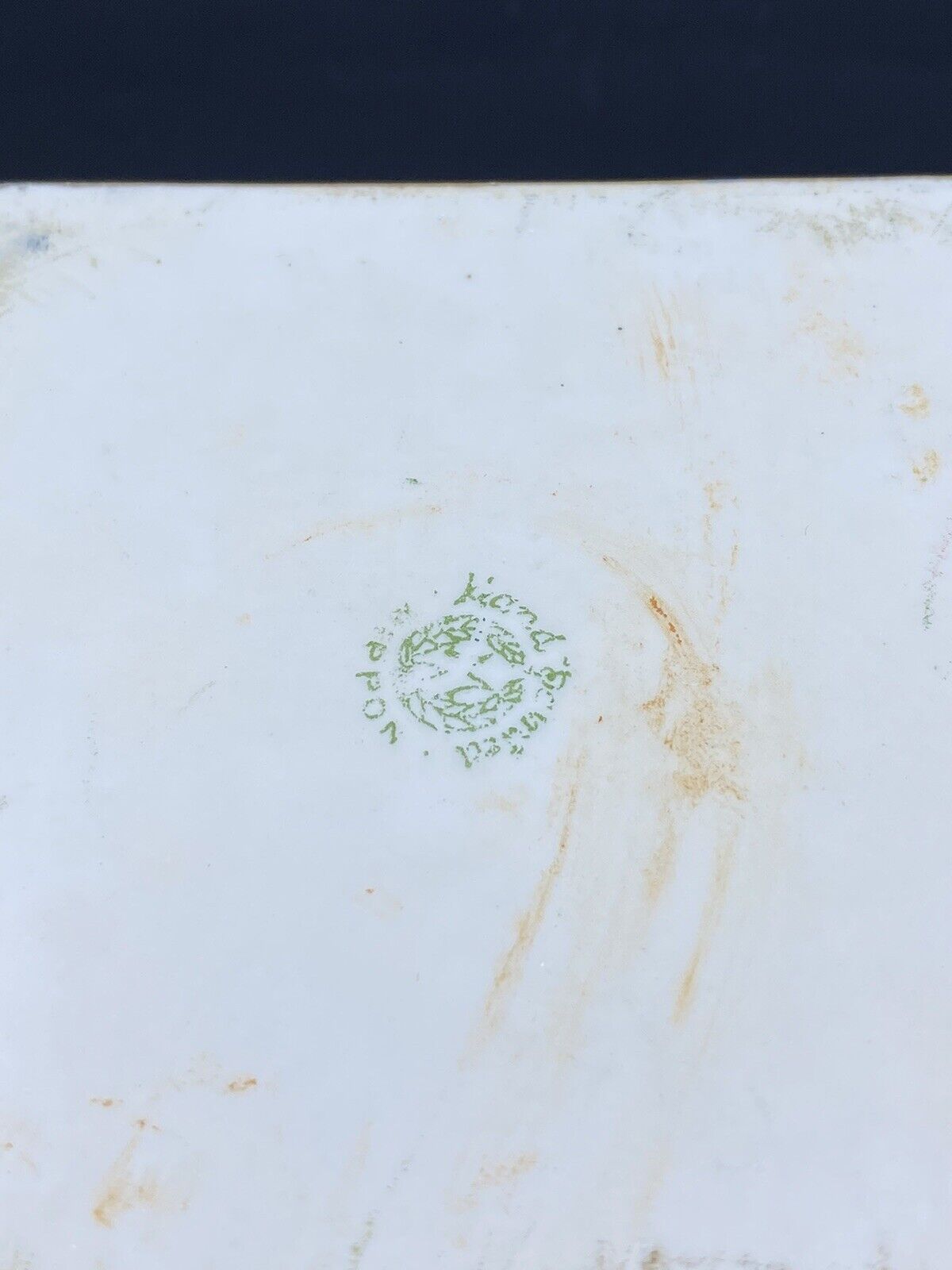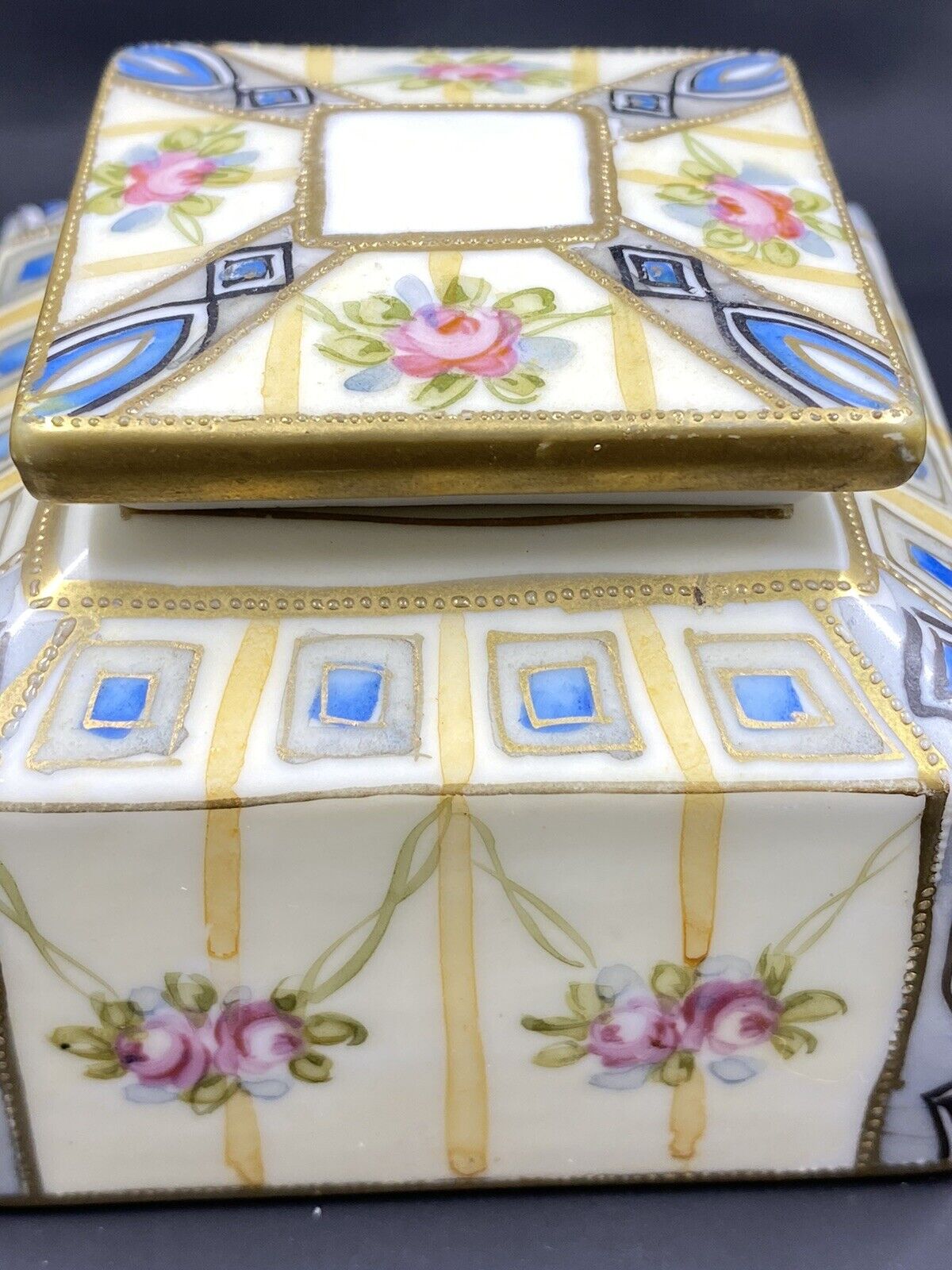
Nippon Inkwell with Moriage
| Categories | Ceramics/Porcelain "Named" Makers |
| Type | Nippon |
| Material | Porcelain |
| Markings | Nippon mark |
| Manufacturer | Nippon |
| Origin | Japan |
| Date or Era | circa 1900 |
| Measuring | 2 ¾” square; 2 ½” high |
Marked hand painted Nippon inkwell, square-shaped, white with blue and pink roses, with raised gold moriage accents. There is a chip on the edge of the inkwell.
Moriage describes a time-consuming technique of applying layers of enamel on top of each other to build up a three-dimensional effect. The term is more commonly used to describe the application of a string line relief design to ceramics.
The moriage decorating technique on pottery and porcelain dates to the mid-1700s. Until the late 18th century, it was primarily used on pieces sold in Japan. Beginning in 1880, Japanese ceramic manufacturers began using the technique on pieces made for export to the United States. Moriage was a favorite decorative motif during the Nippon period (1890-1921).
The moriage decoration was applied either before or after glazing. Three methods were used: (1) rolled slip was applied manually; (2) tubing or slip trailing similar to icing a cake; and (3) the brushing of liquid slip. The Japanese called this latter technique hankeme.
Sold for $35 in August 2023 – Sold for $46 in November 2024
Content disclaimer. The information posted is the owner’s best knowledge and may not have been vetted by the SOIC. We welcome comments, corrections, and additions, working to make our website information comprehensive and accurate.
Join the Society of Inkwell Collectors (SOIC) – it’s free!
Founded in 1981 as a non-profit organization,
we are documenting inkwells (and accessories).
We’re here to help and inform!
